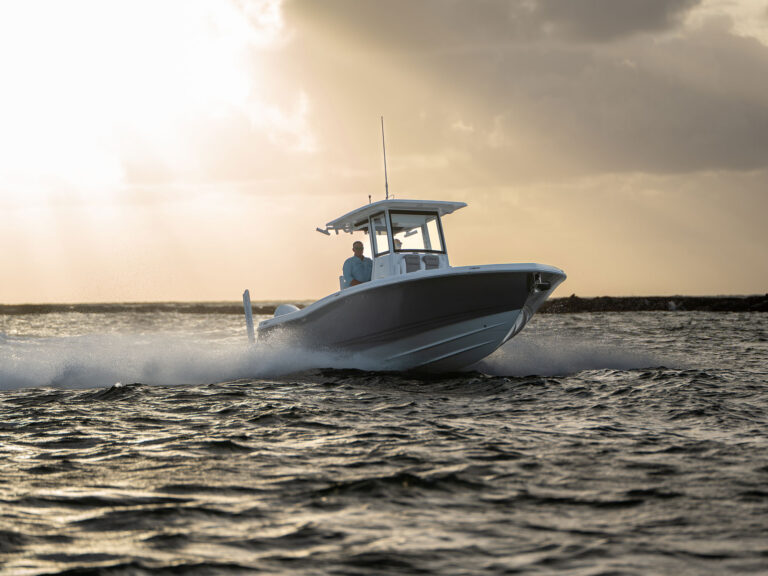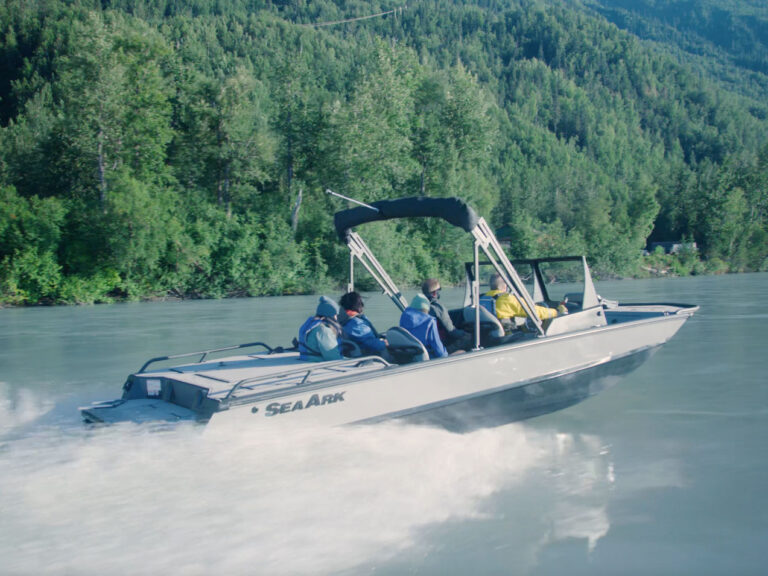
Whether it’s a couple of months of colder weather or a full-on, six-month snow-and-ice winter, layup and winterization prove necessary for many boaters. We compiled a top list of tasks not to put off until spring.
Then to make sure we deliver you the right goods, we worked with Rob Gina, master mechanic and owner of Boatwrench Inc. near Orlando, Florida.
Stabilize Fuel
The No. 1 cause of clogged fuel injectors and carburetors is stale fuel. Today’s alcohol-rich fuels wreak havoc when left to sit. If you’re not going to use your rig for 30 days or more, treat the fuel with conditioner. Forget and you risk fuel lines deteriorating from the inside out, depositing goo inside your carburetors or fuel injectors. Small deposits of fuel left inside injectors or carburetor float bowls and jets can gel and solidify, making for a lengthy cleanup job come spring. Add stabilizer, such as Bell Performance, Star brite Star-Tron, Sta-Bil, or Techron Protection Plus, per the amount on the label on your last voyage of the season, and run your engine long enough — at least 15 minutes — to get the doctored fuel through the entire fuel system.
Drain Engine
When water freezes, it expands. With inboards and sterndrives, if you forget drainage, a cracked block, exhaust riser or manifold may greet you at the start to the next season.
Most newer inboards and sterndrives have easy-drain systems. Older engines must be carefully drained and checked to ensure complete drainage. To ensure complete protection, buy a gallon of pink RV antifreeze and pour it through all engine hoses and exhaust manifolds. When you see the pink liquid run out, you’ll know the system is completely drained of water.
Run a pipe cleaner into petcocks to clear debris and rust chips. You may be surprised at the amount of water that drains after doing so.
Outboards are self-draining. Simply tilt them fully down and all water exits through the propeller hub. Don’t tilt the drive back up — rain will collect in the prop hub and then the lower unit, leaving it to freeze and crack over the winter.
Drive Lube
The big no-no is the potential for water damaging storage. Water could be there all winter, separating from the lubricant and sitting on vulnerable gears, shafts and bearings. Your drive could be junk by spring. One common way water intrusion happens is when fishing line wraps around your prop and cuts into your prop-shaft seals. This causes the coffee look your drive lube gets when it’s mixed with water. The other bad lube look and smell is black and burnt. Examine yours and if it looks black or milky, smells burnt, or there are metal shavings clinging to the magnetic drain screw, gear and/or bearing, trouble is coming. Get your drive serviced now — don’t wait until next season.
Prop and Shaft
The way to find fishing-line snarls is to remove your propeller. It’s also a good time to check your propeller for blade damage and spin your prop shaft and check for straightness. With the propeller removed, send it off to a prop shop for repair. Before reinstalling, coat the prop-shaft splines with marine grease. Last, don’t forget to give the drive unit (gear case) a once-over. Check for skeg damage, paint abrasion, and corrosion. Fix any damage, and sand and coat with touch-up spray to keep the drive looking like new.
Fog Your Engine
Fogging means to protect the inner workings of an engine with a coating of lubricant. During storage, your engine’s steel parts (valves, camshaft, piston rings, crankshaft, bearings and connecting rods) need a film of lube to keep them from corroding. There are multiple ways to do this and many concoctions to use. Typically, you’ll remove the engine flame arrester, and while the engine runs at a fast idle, spray engine fogging oil (like that offered by CRC, Star brite and engine manufacturers) directly into the air intake until the engine stalls. Gina advocates a special mix. “We mix fuel 50/50 with 25 percent two-stroke oil and 25 percent Bell Performance fuel stabilizer and pour that into the fuel filter. Then we fog the engine with that same mixture by pouring it directly into the intake as the engine idles. Then we shut the engine off and replace the flame arrester.”
Grease Monkey
Keeping moving parts moving freely ensures you won’t have sticky issues next spring. With a grease gun filled with waterproof marine grease, lubricate all fittings noted in your owner’s manual. Just as important, wipe away all remnants of dirty, old, hardened grease with a rag soaked in WD-40 or similar lubricant. That hardened grease will eventually bind up; steering cables are a great example of this issue.
Coat of Arms
Gina notes: “It’s important to coat your engine with a film of protective lubricant. At Boatwrench we use AmsOil Metal Protector or CRC Metal Protector. Spray all electrical and ignition components, spark-plug wires, fittings, hose clamps, and all surfaces to protect from condensation and rust.” Others prefer a silicone spray.
Zincs
Anodes are typically placed in strategic locations as sacrificial elements, so when they are too eroded to do their jobs, they should be replaced. Check your owner’s manual for the location and proper removal and replacement of anodes, and whether yours should be magnesium (freshwater use) or zinc or aluminum (salt and brackish water).
This list could go on and on. There are many more tasks that should be remembered before winter layup: water-pump check, steering systems, electrical checkup, etc. Remember: A boat and engine that go unchecked are typically the ones to fail when they’re needed most. Keeping yours in top condition not only helps ensure safe and fun outings, but it will also help fuel higher resale values when it’s time to trade up.









